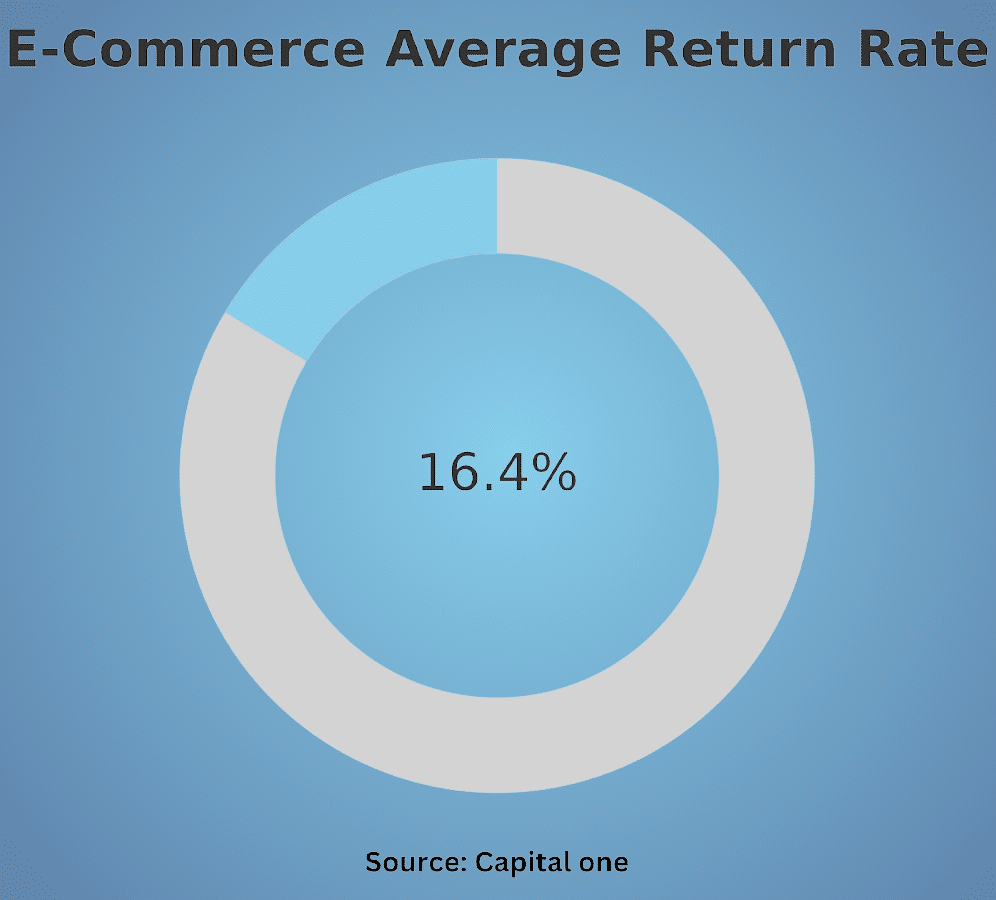In e-commerce, returns are inevitable, but having an optimized return process is crucial for ensuring customer satisfaction and fostering loyalty. A study found that 62% of shoppers are more likely to make a purchase online if they can return items in-store. And 92% said they would buy again from a retailer if the returns process was easy.
Efficient e-commerce return strategies require effort but yield significant returns in terms of repeat business, positive reviews, and a loyal customer base. This post covers best practices for crafting a transparent return policy, minimizing returns, managing return inventory, leveraging returns data, and delivering excellent service.
Why Prioritize Efficient E-Commerce Return Strategies
Neglecting optimized return practices directly impacts e-commerce businesses’ revenue, reputation, profitability, and sustainability:
Revenue Losses
A poor return experience leaves a sour taste with customers. Additionally, only 77% of shoppers who have a positive return experience actually make a repurchase right away. This results in missing out on valuable repeat buyers. Implementing optimized return strategies keeps customers engaged and encourages spending.
Damaged Brand Reputation
Thanks to online reviews and social media, horror stories about returns gone awry spread quickly. Rigid return policies, lost merchandise, and cumbersome processes damage your reputation.
Decreased Profit Margins
Stockpiles of unprocessed returns along with return shipping costs directly eat into profit margins. Merchants also have to write off some returns as total losses if they can’t recoup any value.
Manual, inefficient processing further compounds losses through increased labor costs, missed return windows for refunds, and more. Lack of insight into return reasons leads to avoidable product issues as well.
To address these challenges, Outvio’s return management software offers valuable insights into the reasons behind returns, helping to prevent avoidable product issues. By offering streamlined processing and comprehensive data analysis, return management software empowers merchants to optimize their return strategies and effectively minimize losses.
Environmental Impact
Failure to manage product lifecycles and reverse logistics smartly results in returns becoming an environmental burden, which harms your brand’s sustainability image.
- Over 6 billion pounds of returned goods and packaging were sent to landfills recently.
- Lack of smart reverse logistics and product life cycle management.
Craft a Clear, Transparent Return Policy
The foundation of a solid e-commerce returns program is a transparent return policy that sets expectations up front. Your policy should be easy to find on your website and clearly explain:
- Return deadlines (e.g. 30 days after delivery for a refund)
- Acceptable item conditions for returns
- Return shipping instructions and costs, if applicable
- How to initiate a return (website form, call support, etc.)
- Refund procedures and timelines once an item is received.
Being upfront about your terms avoids confusion and frustration later on. Customers know exactly what to expect, which promotes a hassle-free return experience. Don’t bury the policy in tiny font or make shoppers dig for it.
Return Policy of Various Sellers
| Retailer | Return Window | Refund Type | Restocking Fee? |
| Amazon | 30 days | Full refund | No |
| Walmart | 90 days | Full refund | No |
| Target | 1 year | Full refund | No |
| Macy’s | 180 days | Full refund | No |
| Sephora | 60 days | Full refund | No |
Minimize Returns Through Proactive Measures
While you can’t prevent all returns, there are steps to reduce ecommerce return rates. Doing so improves profit margins and conversion rates. Common return management solutions include:
- Accurate product descriptions and visuals: Provide detailed specs, high-quality images from multiple angles, fabric swatches, etc. so buyers know exactly what they’re getting. 58% want a “no questions asked” return policy because of inaccurate listings.
- Automated address validation: Incorrect addresses cause shipments to be undeliverable and returned. Verify addresses at checkout to cut down on preventable returns.
- Customer feedback integration: Listen to your customers. If certain products or sizes are frequently returned, update descriptions, size guides, etc. to set proper expectations.
The goal is giving customers all the information and tools they need upfront to make an informed, satisfactory purchase that doesn’t get returned.
Streamline Returns with Smart Technology
Even with preventative measures, a percentage of orders will always be returned. That’s why leading e-commerce returns technology is a must to streamline e-commerce returns. Solutions can:
- Automatically generate return shipping labels for customers to print.
- Integrate with carriers for simple return tracking.
- Optimize returned inventory management by routing items to stores, warehouses, etc.
- Analyze returns data to uncover patterns and issues.
“60% of retailers are using technology to optimize warehousing, order management, transportation, and every other part of the supply chain, including returns management.”
Maximize Value From Product Returns
One major key to return process optimization is maximizing value recovered from returned inventory. With an automated return process, there are several potential paths:
- Restocking and reselling: For undamaged, prime items, get them back on virtual shelves quickly.
- Refurbishing and reselling: Items in good shape may just need light cleaning, repackaging, etc. to go back into inventory.
- Liquidating: If an item can’t resell as new, look at liquidators and resellers that will take it off your hands for a partial return
Efficient refund management strategies are also crucial. Issue refunds promptly, but ensure returned merchandise is accounted for first to validate each claim.
Deliver Proactive Customer Service
Customer service is pivotal when it comes to e-commerce return policy best practices. A frustrated shopper who got poor service is likely gone for good. But 67% will shop a brand again after a positive returns experience.
Implement customer return communication workflows to:
- Confirm receipt of a return and provide status updates.
- Quickly resolve any issues like missing items, wrong returns, etc.
- Give customers a chance to provide feedback post-return.
- Cross-sell and offer promotions to drive future purchases.
Additionally, return shipping management options like free return shipping, a prepaid label in the box, or local drop-off spots create a frictionless return process. Little conveniences add up.
Analyze Returns Data for Continual Improvement
Following best practices like detailed policies, smart use of tech, and top-notch service keeps customers happy. But the real secret sauce is found in your product return analytics.

It’s essential to grasp the scope of return rates in the e-commerce industry. The above statistic underscores the significance of optimizing your return strategy to stay competitive in the market.
Important e-commerce return metrics to track and analyze include:
- Return rates (overall and by product, category, season, etc.)
- Top reasons for returns (size, defects, mismatched descriptions, etc.)
- Customer characteristics causing higher return rates.
- Value recovered vs. lost on different types of returns.
By studying this returns data, you gain visibility into problem areas. Was there a spike in returns for certain SKUs due to a bad batch? Are certain geographies returning more often? Did a tweak to copy drive up returns?
In Summary
Following e-commerce return policy best practices is a must in today’s consumer trends. Empowering customers with return flexibility drives loyalty and repeat purchases. Combined with data-driven reverse logistics management, returns become an opportunity rather than a profit-killer.
Make optimizing your e-commerce return strategy a top priority for sustainable growth and success!
Published by: Khy Talara






